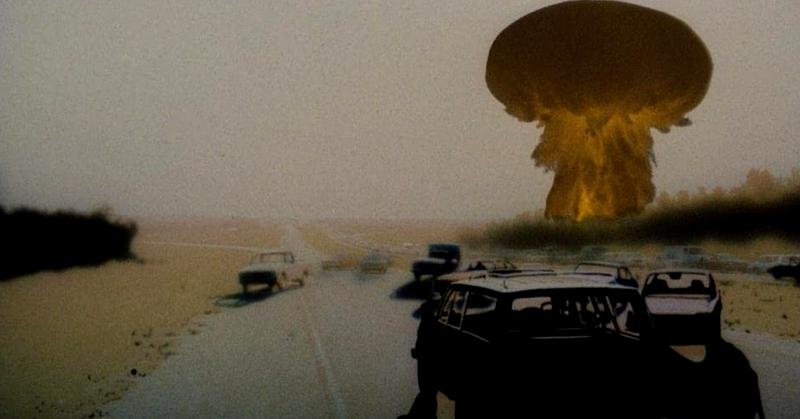The Day After' Was World War III TV That Scared Even Reagan
By | November 18, 2020

In 1983, the TV movie The Day After brought a grim vision of nuclear holocaust into American living rooms when it aired on ABC. In the lead-up to the show, controversy brewed over the graphic depictions of Cold War destruction and its aftermath; in response, ABC set up a hotline for those disturbed by the movie, and convened a panel of celebrity experts to discuss the subject matter afterward. Did the show provide useful catharsis, or was it lurid sensationalism? It was both, though there is some evidence that The Day After made an impression on world leaders, including President Ronald Reagan. Whatever the case, it was a phenomenon unlike anything TV had seen, becoming the highest rated television film in history, a record that it held until 2009.
The War At The Center Of The Film

In the film, the war began when the Soviet Union started to build up the military in East Germany, behavior which the Soviet Union claims are Warsaw Pact exercises, however, the goal is to intimidate the United States, Britain and France, so they will withdraw from West Berlin. The conflict escalates when the United States refuses to back down, leading the Soviets to send armored divisions to the border between East and West Germany. Then, on September 15, rebellion within the East German Army led the Soviets to blockade West Berlin, and when the Soviets refuse to stand down, the United States puts U.S. military forces on DEFCON2 alert. By the next day, all out war has begun and the Soviet Union evacuates Moscow; major cities across the United States begin mass evacuations as well, as the war escalates. It is unclear which country detonated a nuclear weapon first, but in the aftermath, the Northwestern and Midwestern United States has been left devastated.
It All Leads To A Bleak Ending

Against this backdrop, the film tells the tale of ordinary people in the wake of the war. During the first half of the film, the characters are living their lives, oblivious to the events in the world outside Lawrence, Kansas. When the bombs dropped, most of those in Kansas City, Missouri are killed, while the survivors must deal with the fallout and ensuing chaos. The survivors in Lawrence have to contend with the effects of the radiation on their bodies. The film does not offer a “happily ever after” Hollywood ending, but instead, offers a bleak vision of the destruction that would follow a nuclear war. The film ends with the statement that “the catastrophic events you have just witnessed, are in all likelihood less severe than the destruction that would actually occur in the event of a full nuclear strike against the United States…”
The Beginning Of The End

The creation of the film began when Brandon Stoddard, the president of ABC Motion Picture Division who had popularized the miniseries format with Roots, saw The China Syndrome and envisioned a film that would explore the aftermath of nuclear war on the United States. Stoddard commissioned Edward Hume to create the script; in order to make it acceptable for ABC, Hume completed significant research, which included a 1978 government report, The Effects of Nuclear War. He also wrote several drafts of the script. However, concerns lingered over how the censors would react to the film, Nicholas Meyer, the director, wanted to make sure that the film did not resemble a Hollywood disaster film. One of the steps he took was to assure ABC that no big name actors would appear in the film. The only one who did was Jason Robards, who Meyer met on a flight. ABC wanted at least one big name to attract audiences in Europe. Meyer used 1,000 local volunteers in Lawrence, Kansas in the film and staged the streets to look like the aftermath of a nuclear bomb.
Anxiety About The Film

ABC originally planned to air the four-hour film on two consecutive nights, but had a difficult time filling the advertising slots; when they finally were able to sell 10 minutes of advertising time, they reduced the film to two hours. Because ABC was concerned about the provocative nature of the film, they created an 800 number to handle calls from people afraid of an actual nuclear disaster and issued viewing guides that included fact sheets on nuclear weapons. The actor John Cullum appeared on screen the day before the film was aired to warn parents; he called the film “unusually disturbing” and advised them to keep young children from viewing it. After the film, which had record viewership, Ted Koppel hosted a roundtable discussion which included Carl Sagan, William F. Buckley, and the Secretary of State George Schultz. During the discussion, Schultz argued that nuclear weapons were necessary to protect the nation, and it is believed that Sagan coined the term “nuclear winter.”
The Aftermath Of A Film

People were startled by what they saw, and the film intensified the debate about nuclear weapons. Ronald Reagan watched the movie and wrote in his diary that it “left me greatly depressed” and concluded that “My own reaction: we have to do all we can to [avoid] a nuclear war.” Although the film did upset Reagan, he continued with the extant policy to force the Soviets to the negotiating table. However, in 1987, he signed the intermediate range nuclear forces treaty with Mikhail Gorbachev and sent a telegram to Meyer which said “Don’t think your movie didn’t have any part of this, because it did.”
